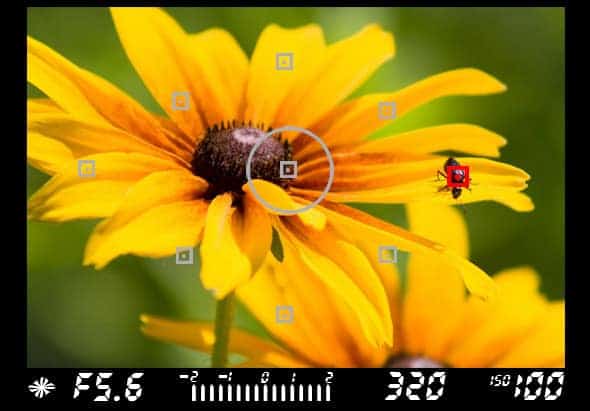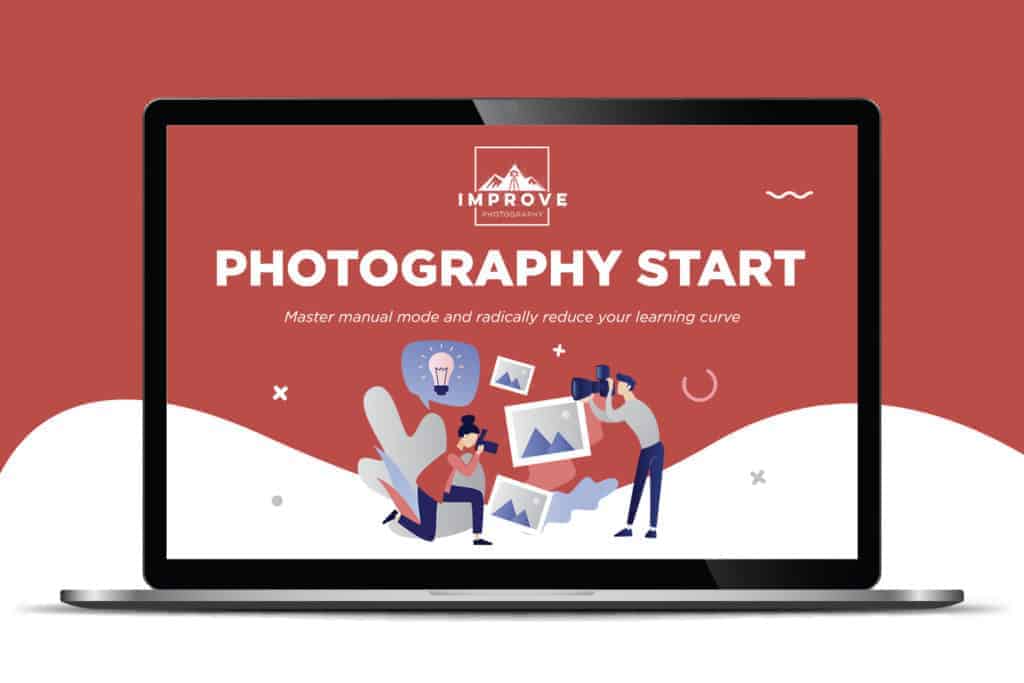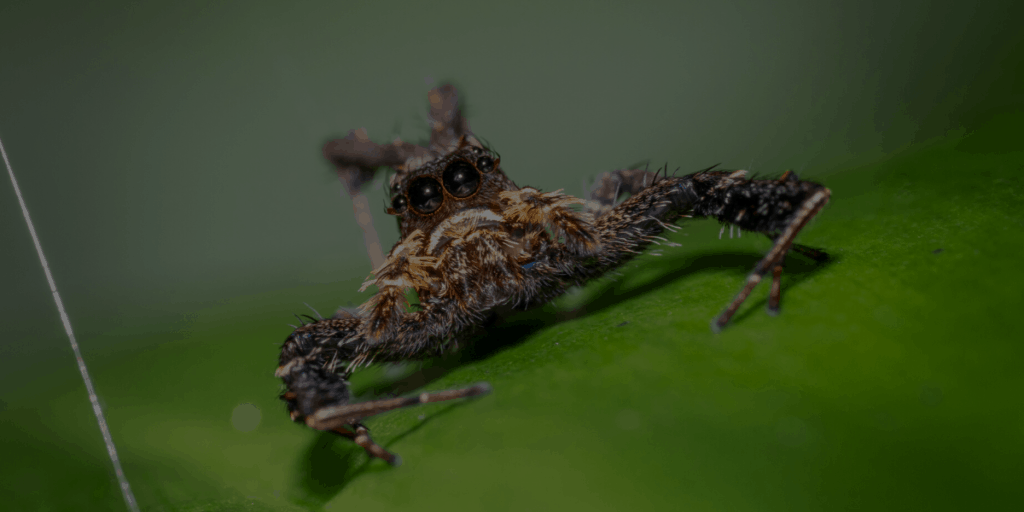Now, I'll teach you all about focus and why your photos may not be as sharp as you'd like them to be.
This morning, I got an email from one of the students in my Photography Start Course who said she spent $2,000 on an expensive camera and another $1,500 on a high-end lens. Still, her pictures don't look as sharp as she would like them to, and wondered why that is. I have to admit that I get this type of question SO OFTEN that I dedicated an entire WEEK of training in my beginner class to teach how to get crystal clear and sharp photos.
It is not uncommon for photographers to think that something must be wrong with their equipment if the photos don't come out sharp, but most of the time I find that the reason is simply a product of mistakes the photographer makes when shooting. You can avoid those issues by understanding how to properly focus your camera.
The #1 focusing mistake of beginning photographers
The #1 mistake I see from beginning photographers in terms of getting clear pictures is that they aren't being precise with their focus. I often ask students where they are focusing, and I get answers like, “On the model's face.” The fact of the matter is that “the face” is far too large of an area to focus on for intimate portraits.
Suppose you're taking a portrait of someone. Now that you've learned how to use shallow depth-of-field from the second part of this series, you want to use it all the time in your portraits to get a creamy background behind the subject. This means you're usually shooting your portraits at f/2.8 or a similar low aperture.
Suppose that you're using a 100mm lens and standing 7 feet (2.1 meters) from the subject. Did you know that, with these settings, only 1.4 inches (3.5 centimeters) of the photo is sharp? That means that, if you focus on the person's cheek, their eyes and nose will be partially blurry.
So if you want your photos to come out crystal clear and sharp, you need to focus PRECISELY and make sure you have enough depth-of-field to make the subject come out sharp.
When shooting portraits, you will almost always focus on the person's eye, since that is where the viewer of the photo will look first. For landscape photographers, check out this article on where to focus in landscape photography.
How to focus on one spot
When you were shooting in automatic mode on your camera, the camera would automatically find the subject and focus for you. Now that you're shooting manually, it's time to take control of your focus as well.
Your camera ALWAYS focuses on one specific spot in the scene. It is physically impossible for a lens to focus on two spots at once. When you look through your viewfinder, you see a bunch of dots (Canon) or small boxes (Nikon). Those markings show you where the camera is focusing. This spot generally blinks red when the camera sets focus.
In the picture below, I chose to focus on the ant on the flower, since that is where I wanted people to look. To do this, I set the camera to spot focus and used the four-way selector on the back of my DSLR to move the focus point onto the ant.

Sometimes, the spot in the picture where you want to focus will not have a focus point available. This is especially true on entry-level Canon Rebel or Nikon D3500 DSLRs, which do not have many focus points. If you find that this is the case, check out this article on focusing and recomposing.
Focus Selections
I hope I didn't confuse you earlier when I said that the camera can ONLY focus on one specific spot in the photo. There are ways that you can activate multiple focus points at once, but in doing so, the camera is just choosing the best of both worlds and compromising between the focus selections to set the focus in the middle somewhere.
99% of the time when I'm out shooting I use spot focus, which allows me to move around the focus point in the viewfinder. My thumb has become adept at constantly moving around the focus point using the four-way selector on the back of the camera as I compose a shot through the viewfinder. Spot focus is great because you have exact control over where the focus is placed.
However, there are other focus selection options on most DSLR cameras. Other than spot focus, you have the ability to choose a small group of between 3 and 5 focus points and tell the camera to choose the best of those points, or you could set your camera to determine which focus point to use all on its own.
I never let the camera take control of focus–it's a recipe for blurry pictures. When I'm shooting sports or fast-moving wildlife, I'll sometimes set the camera to use any of the center area focus points and choose the best one, because the action happens faster than I can move the focus point.
Although there are certainly situations to use other focus selections, I would encourage you to use spot focus and get used to constantly moving around the focus point around the frame as you shoot for the next few months.
Focus Modes
Aside from selecting which focus point(s) the camera is using, you also need to set which type of autofocus the camera will use. For most uses, you'll want to leave your camera on “AF-S” (Nikon) or “One Shot” (Canon). This means that the camera will acquire focus when you press half-way down on the shutter button, and then take the picture when you finish pressing all the way down on the shutter button.
The other main option is continuous focus (displayed on the camera as “AF-C” for Nikon cameras and “AI Servo” for Canon cameras). This mode is used when the subject is moving. Suppose you're shooting a soccer player running toward you. If you use one shot, then the camera focuses when you press half way down on the shutter, and by the time you finish pressing all the way down, the camera takes the picture. In that split second, the athlete will have moved, so the picture will not turn out sharp. Continuous focus (AF-C or AI SERVO) means that the camera continues to find focus all the way up to the instant that you snap the picture.
So why wouldn't you want to use continuous focus all the time? Because it's slightly less precise than one shot. So here's the rule… use one shot (“AF-S” on Nikon, and “One Shot” on Canon) for all shots where the subject is reasonably still like landscapes or most portraits. Use continuous focus (“AF-C” on Nikon, and “AI Servo” on Canon) for all fast-moving shots.
Note: Canon users will also see the option for “AI Focus” when choosing a focus mode. There is a specific use for this, but honestly it's just outdated technology. I have tried it extensively even in the best case scenarios for this focus mode and have always achieved better results with AI Servo.
You have just learned a LOT of the basics of how your camera works, but there is much more to learn. If you want more information like this in video format that you can watch at your own pace, you should really check out the Photography Start Course. It's 22 videos, many filmed on-location, with all the camera settings for each picture, videos of exactly how to put a composition together, and training on getting tack sharp photos.

What's Next?
We have a plethora of resources to help you take your photography to the next level!
First, I would recommend joining the Improve Your Photography Facebook Group. Feel free to ask as many questions as you want and have them answered by photographers just like you!
Check out our amazing Premium Tutorials to learn from some of the top photographers in the world.
Join our Improve Photography Plus Membership for training designed by experts – start a 14-day free trial today!
Find the best photography locations near you!
Our recommended gear list so you don't have to worry about wasting money on the wrong stuff. See our top picks!
Oh, and in case you forgot…
Roses are red,
Violets are blue.
Photography is great,
And you are too.


Thank you for all your lessons on photography. You are a very good teacher and I’ve enjoyed reading everything!
Please continue the awesome lessons!
This was very helpful Thank You
Very very Well written series, instructions are clear and explanations simple and easy to follow, Finally I can start using the manual mode properly 🙂 Thank you!
My Canon 60d doesn’t have lower stop aperture.. It only has till f 5.6
It doesn’t go any lower than that.
Why??
so far I’ve found this free course very informative and easy to understand . Thank you for providing it as a free resource .I am considering paying for your beginner online course , but I do not own a dslr .I use a canon sx50 hs ,how beneficial would your course be for me with basically just a very fancy point and shoot camera ?…
Aperture size is determined by your lens size not body make
Very impressed – first visit to the site, really nicely written content for new photographers to follow.
I was really looking for some guidance as a beginner in photography which is my hobby. I really impressed the way the things are narrated which is very easy to understand as a beginner. Thank you and all the best.
Biju Antony
Explained the complex functionalities in verg simple and easy terms. Briliantly done. Impressed by the way it is expressed with examples.
Thank you for an extensive entry into basic photography. I just enrolled in a class that was supposedly entry level, but way over my head. After reading through this, I now feel caught up with the level of the class and empowered to meet my first assignments requirements!
The explanation was very good and simple to understand, Your way of teaching is very impressive with lot of new information.
Oh my. I thank you so much for this lesson. You have already taught this beginner so much. Once I can get to trying some of this out and exploring the camera more I really think Im going to sign up for your class. You did a great job. Ive search all over on the web and by far this is the best. Thank y ou.
Its good to learn basic
let me try your advise
I don’t know if you have describe anything on use of flash light, any wway thanks.
ha ha
I just recently got into photography and this totally makes me more confident. I’m looking forward to getting started.
Great job and thank you!
This was a very informative website. Everything was very detailed, which was very helpful for me because I’ve been looking for photography classes in the summer since I am a full time college student in a different major during the regular school year. I haven’t found a place that offers classes in the summer time, so I decided to email a few photographers. One emailed me back letting me know that many photographers are self-taught, and they don’t have a certificate or degree. It’s just a matter of motivation and determination. I immediately took the information and ran with it. I start looking to learn from websites and blogs. This is the most helpful, precise one yet. I’m excited to get my camera and use all that I’ve learned. Thank you!
Really helpful, informative and very easy to understand. I have just started reading about photography because I want to buy a new camera and the article was really helpful in understanding the basics. Now, I just can’t wait to buy one good camera and start practicing.
This was super helpful! Thank you.
Get more information on photography and be the best.
Great teaching method. Very practical information.
I am a bit confused about when you explained the FOCUS SELECTIONS. On my Fuji X-T1 I have a menu selection called “autofocus setting”. When select it, I then have selections:
focus area
release/focus priority
and others.
Focus Area selection allows me to choose the “+” of a “+”s screen. I guess this is to select what you call the “spot focus”?
Release/Focus Priority selection gives 2 further selections: AF-S Priority Selection Release and AF-C Priority Selection Release. Each of these selections gives 2 further selections: Release and Focus.
Please explain.
Thank you so much.
Hung Tran
good work….
thanks